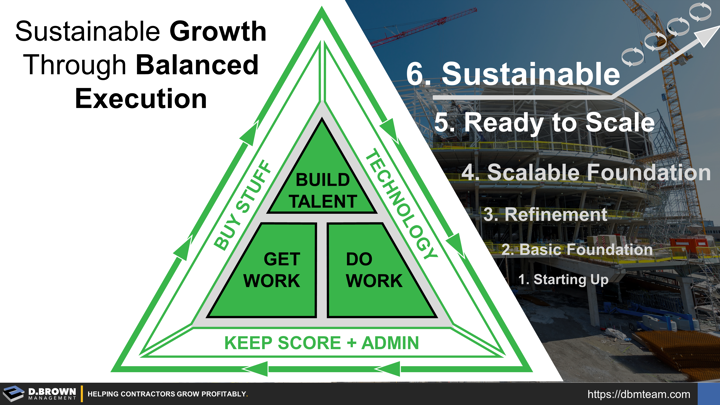You can’t “PUNCH LIST” your business like you can a project.
Building a business is a process where you have to develop balanced capabilities in all areas. If you try to address too many things without attacking your biggest bottleneck you won’t get the throughput you need to make the whole business perform.
The more complex your business becomes, the harder it is for everyone on the team to clearly see the bottlenecks then align as many resources as practical around eliminating them. There is no magic bullet for this but having structured models, assessment tools, and facilitation methods to align teams around a common roadmap is a start.
We begin by looking at a contracting business in 6 major components then continuing to break it down from there until we identify the areas that will have the biggest impact.
Hope this diagram helps you visualize your business in a different way.
See how this looks slightly expanded into a Contractor Business Model. Know that with each stage of growth, each of these systems and how they integrate will need to evolve along with every level of your strategic decisions.

